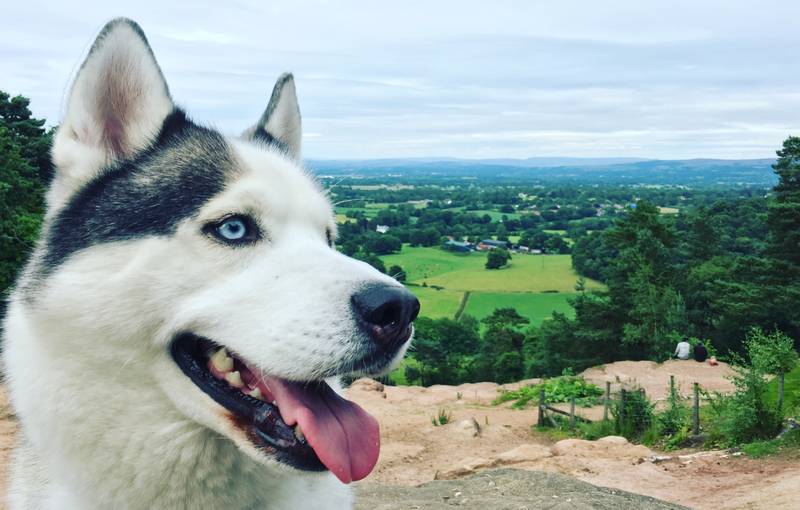SO YOU WANT TO BREED YOUR SIBERIAN HUSKY
Put bluntly, there are currently too many poor quality Siberian Huskies being bred simply for commercial purposes. These huskies are then sold on to naive, unprepared new owners with little knowledge or understanding of the breed and when the “cute” puppy becomes a bouncy teenager, that is when they are likely to be sold on or given up to welfare for rehoming.
If you are thinking of breeding your dog/bitch, these are some of the things you need to think about:
1. How do you know your dog/bitch is good enough to breed from?
In order to ensure that the breed retains the qualities which make it what it is, any dogs bred from need to be as close to the breed standard as possible. How do you know if your dog is good enough? The best way of ascertaining this is to both show and work your dog(s). Success in the show ring under knowledgeable judges will indicate that your dog is of good quality. You should look to achieve at least a Kennel Club Stud Book Number as an indication of quality as assessed in the showring. On the trail, you should ascertain whether your dog retains the breed’s love for working in harness. Without some degree of show success and the ability and willingness to work effectively in harness, dogs are unlikely to be good enough to breed from.
2. Is your dog Kennel Club Registered?
Although KC registration is not a guarantee of quality, the lack of KC registration is usually an indication of poor quality commercial breeding. KC registration is at least a strong indication that the pedigree of your dog is accurate and honest. This will help in checking the health records of your dog’s ancestors. Without KC registration, this will be impossible.
3. Have the appropriate health tests been carried out on your dog/bitch?
If your dog is KC registered and has proved its quality in the showring and on the trail, has it had the appropriate health tests for the breed and satisfactory results achieved?
Hip Dysplacia is not a major problem within the breed although, of course it does occur very occasionally, and the way this situation can be maintained and improved is by every breeder hip-scoring his/her dogs under the BVA scheme. The current breed average hip score is 7. No ethical breeder would breed from a dog whose hip score was in double figures or where the scores of dog and bitch added together came to more than 20.
Eye Problems – again, these are not common within the breed, but, unfortunately are not unknown. There is some mild disagreement about which eye tests are necessary for Siberians in the UK , but both of the UK breed clubs and SHWA(UK) agree that sibes should be tested for both Primary Glaucoma and Hereditary Cataracts. Other conditions for which testing is recommended are PRA (Progressive Retinal Atrophy), PPM (Persistent Pupillary Membrane) and CD (Corneal Dystrophy).
It is not enough to ensure that your dog and its prospective mate have good hips and clear eye tests. You also need to look back several generations to make sure that you have four or five generations all clear of issues. Eye problems in particular can sometimes skip generations and suddenly reappear in the litters of dogs with clear eye tests. It is crucial that earlier generations are also clear.
4. How Many Litters Has Your Bitch Had?
How old is the mother and how many litters has she had? No bitch should be bred before the age of 2 years or after the age of 7. There should be at least a year between successive matings and no bitch should have more than three litters in her lifetime.

5. Can you afford to have a litter?
Although commercially minded breeders regard breeding as a money-making enterprise, the reality is that if things go wrong, you could end up losing thousands on a litter. If for example the mother needs a caesarian and as a result rejects the pups so that you have to spend 2 weeks or more handfeeding them every couple of hours 24/7, it is going to cost you a bomb in vet fees, puppy milk, baby bottles and probably in terms of time lost from work.
6. Do you have a waiting list?
The puppy farmers, backyard breeders and naive/stupid/greedy “pet” breeders are finding it more and more difficult to sell their pups in our current financial climate. Before you even think of breeding, you should ensure that you have homes waiting for any of the pups that you are not going to keep.
7. Letting the puppies go to their new owners
Puppies should never go to their new owners until they are at least 8 weeks of age. This is crucial in terms of the important lessons the pups are learning from their mother at this stage.
8. Taking Back Your Breeding
Even when you have sold your pups to the best possible homes, disasters can happen and people sometimes find it impossible to keep their dog(s). Are you in a position to take back any dogs which have been bred by you at any time in the future, no matter what age they are? Ethical, responsible breeders will always do this.
These are just some of the factors you need to think about before breeding your dog.
Mick Brent
Dreamcatcher Siberian Huskies
The Siberian Husky Welfare Association (UK)
